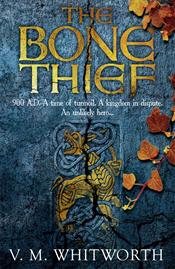The might of the Early Imperial Army will be there, with contingents from all over the country, and indeed the wider Roman Empire. In lesser numbers (maybe reflecting the smaller army of the later Empire?) also appearing will be the Late Romans - no, just because they wear sensible trousers and long sleeved tunics they are NOT Vikings ;) There are some even later Romans too, all the way from Constantinople (it's a jolly long way to come from there just for the weekend, methinks.)
My partner and I will be with the Late Romans (aka Britannia), but since we're aged and close to being pensioned off (some hope!), we're confined to camp and work on crafts such as antler working and maybe mosaic making. Oh, and there will be cavalry, courtesy of Romanorum. There'll be plenty of action in the nearby amphitheatre, including Roman drill, gladiators and even a bear!
More up-to-date, but writing stories about Romans, are a bevy historical novelists, who will be haunting the Roman Camp. Those attending are: the delightful Ruth Downie, Robert Fabbri , Ben Kane, Anthony Riches (who once did me the honour of pronouncing my specialised archaeology reports 'abstruse'), and Russ Whitfield. They will be happy to talk about their books, and will no doubt sell them to you and sign them for you.
For further details of timings go to this website.










